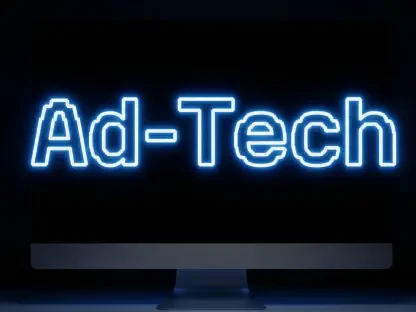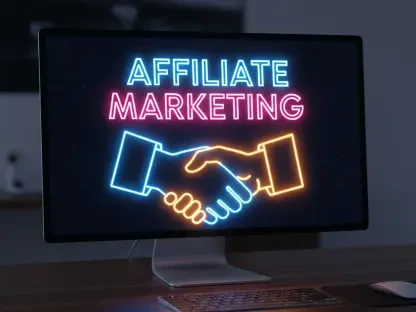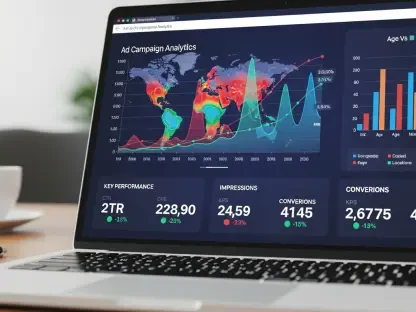Imagine a digital landscape where publishers, the backbone of the open internet, struggle to maintain control over their intellectual property as AI bots relentlessly scrape content without permission, slashing traffic and revenue. This scenario is not a distant possibility but a pressing reality in the digital ecosystem of 2025. The IAB Tech Lab has stepped into this fray with an innovative solution: the AI Content Monetization Protocols (CoMP), a framework designed to protect publishers’ content while creating new monetization avenues through AI licensing. This review delves into the technical intricacies, practical applications, and broader implications of this initiative, assessing its potential to reshape the relationship between content creators and AI companies in a rapidly evolving industry.
Technical Features and Core Mechanisms
Safeguarding Intellectual Property
At the heart of the CoMP framework lies a robust set of tools aimed at shielding publishers’ content from unauthorized access by AI bots. Traditional methods like robots.txt files often fail, as many bots simply ignore these directives, necessitating stronger defenses. The initiative proposes enhanced protective measures, such as integrating web application firewalls on content delivery networks (CDNs) to block non-compliant entities effectively.
Beyond static barriers, the framework explores dynamic solutions like bot classification based on behavioral patterns rather than self-reported identities. This approach acknowledges the ongoing cat-and-mouse game with malicious actors who adapt to bypass restrictions. By prioritizing adaptive technology, the system aims to stay ahead of evolving threats, ensuring that publishers retain control over their digital assets.
The emphasis on IP protection also extends to mandating compliance with established protocols, creating a standardized environment where unauthorized scraping becomes increasingly difficult. This technical backbone not only defends content but also sets the stage for trust in subsequent licensing interactions, a critical component for the initiative’s success.
Establishing a Licensing Marketplace
Another pivotal feature of the CoMP framework is the creation of a standardized marketplace for AI content licensing. This system focuses on packaging publishers’ content for seamless discovery and ingestion by AI companies, streamlining the process of identifying valuable data for model training. Automated transaction systems are integral, enabling efficient exchanges without the friction of manual negotiations.
Drawing inspiration from programmatic advertising, the initiative adapts concepts like deal IDs and floor pricing to fit a buyer-driven model where AI firms initiate demand. These tools allow for tailored agreements, specifying usage limits and compensation structures, which cater to both large publishers with direct deals and smaller ones needing accessible platforms. Such flexibility ensures inclusivity across the publishing spectrum.
This marketplace also incorporates logging mechanisms similar to bidstream data in advertising, providing transparency in transactions. By offering a clear record of interactions, the system builds accountability, fostering an environment where fair compensation for content usage becomes the norm rather than the exception.
Performance in the Digital Ecosystem
Impact on Publishers and Traffic Dynamics
The performance of the CoMP initiative can be gauged by its potential to mitigate the severe traffic loss publishers face due to AI-driven disruptions. As AI tools divert user engagement away from original content sources, the economic ripple effects threaten not just publishers but also supply-side and demand-side platforms reliant on ad inventory. This framework steps in as a countermeasure, aiming to restore balance by securing content access.
For both large and small publishers, the licensing marketplace offers tailored solutions that address diverse needs. Major players can negotiate custom agreements with AI giants, while niche publishers gain access to a broader pool of buyers through automated systems, ensuring that monetization opportunities are not limited by scale or resources.
Additionally, the initiative’s focus on sustaining a healthy digital ecosystem benefits all stakeholders, including AI companies that depend on high-quality content for training. By preventing a “doom cycle” where content availability diminishes, the framework supports long-term viability, proving its performance extends beyond immediate protection to systemic stability.
Benefits for Advertisers and Technology Providers
Advertisers stand to gain from the CoMP framework as it preserves the inventory critical for their campaigns. A decline in publisher traffic directly correlates with reduced ad spaces, impacting reach and effectiveness. By bolstering publishers’ revenue streams through licensing, the initiative indirectly ensures that advertising ecosystems remain robust and vibrant.
Technology providers, particularly those in programmatic spaces, also see advantages as familiar tools are repurposed for content licensing. Their expertise in real-time data trading and transaction automation finds new relevance, positioning them as key players in implementing and scaling the marketplace infrastructure. This synergy enhances the framework’s operational efficiency.
The collaborative nature of the initiative fosters innovation among tech providers, encouraging the development of advanced bot detection and content packaging solutions. Such advancements not only strengthen the CoMP system but also contribute to broader industry progress, demonstrating its far-reaching performance in driving technological evolution.
Challenges and Areas for Improvement
Engagement Gaps with AI Companies
Despite its promising features, the CoMP framework faces significant hurdles, notably the limited engagement from AI companies outside the IAB’s traditional network. Without active participation from these critical stakeholders, the initiative risks incomplete adoption, undermining its goal of creating a balanced content ecosystem. Bridging this gap remains a pressing concern.
The lack of involvement also raises questions about the long-term sustainability of the model, as AI firms’ reliance on quality content could be jeopardized by a declining open web. Addressing this challenge requires strategic outreach and incentives to align interests, ensuring that mutual benefits are clearly communicated and realized.
Efforts to expand collaboration are underway, with a focus on highlighting shared dependencies within the digital landscape. However, until broader buy-in is achieved, the framework’s effectiveness in reshaping content-AI interactions will be constrained, marking a key area for ongoing improvement.
Technical and Contractual Limitations
Enforcing bot restrictions presents technical challenges, as malicious entities continuously evolve to evade detection. While behavioral classification and firewalls offer robust defenses, the arms race with scrapers demands constant updates and innovation, straining resources and testing the system’s adaptability over time.
Beyond technical issues, the initiative cannot address contractual disputes, such as publishers’ struggles to opt out of AI crawlers without losing search engine visibility. These matters, often tied to big tech agreements, fall outside the framework’s scope, necessitating parallel advocacy efforts to complement the technical solutions provided.
The delineation of scope highlights a limitation in tackling systemic issues comprehensively. While the CoMP framework excels in creating standards for protection and monetization, its performance is contingent on external policy changes, underscoring the need for a dual approach that integrates technology with industry-wide negotiations.
Final Verdict and Path Forward
Looking back, this review highlighted how the CoMP initiative tackled pressing challenges in the digital content space with a dual focus on protecting publishers’ intellectual property and enabling monetization through a structured licensing marketplace. Its adaptation of programmatic advertising tools to a buyer-driven model showcased innovative thinking, while its ecosystem-wide benefits for publishers, advertisers, and tech providers underscored a strong performance in fostering stability.
Moving ahead, actionable steps should center on expanding engagement with AI companies through targeted dialogue and incentives, ensuring their active role in the framework’s evolution. Simultaneously, publishers must pursue contractual reforms alongside technical advancements, advocating for fair terms with big tech to address gaps outside the initiative’s purview. As the digital landscape continues to shift, scaling the marketplace to accommodate diverse needs and investing in adaptive bot detection will be crucial to maintaining relevance and effectiveness, paving the way for a more equitable content ecosystem.









